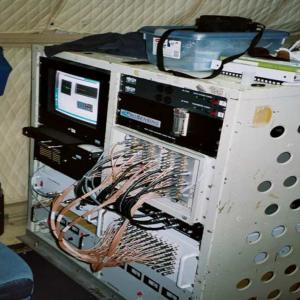Disclaimer: This material is being kept online for historical purposes. Though accurate at the time of publication, it is no longer being updated. The page may contain broken links or outdated information, and parts may not function in current web browsers. Visit https://espo.nasa.gov for information about our current projects.
Two-Dimensional Electronically Scanning Thinned-Array Radiometer (2D-STAR)
2D-STAR is a dual-polarized L-band radiometer that employs aperture synthesis in two dimensions. This airborne instrument is the natural evolution of the Electronically Scanned Thinned Array Radiometer, which employs aperture synthesis only in the across-track dimension, and represents a further step in the development of aperture synthesis for remote sensing applications. 2D-STAR was successfully tested in June 2003 and, then, participated in the SMEX03 and SMEX04 soil moisture experiments.
The 2D-STAR instrument was developed as a research instrument with the flexibility to test options in the evolution of the technology as it existed in ESTAR (synthesis in one dimension, one polarization, and analog processing) to aperture synthesis in two dimensions, dual polarization, and digital processing. The 2D-STAR was designed to fly on a P-3 research aircraft (the NASA Orion P-3B), and to simplify installation, the size was chosen to be similar to that of ESTAR. Several options, such as the choice of the antenna array and number of bits in the digital processor, were made to accommodate potential research rather than efficiency of design.

